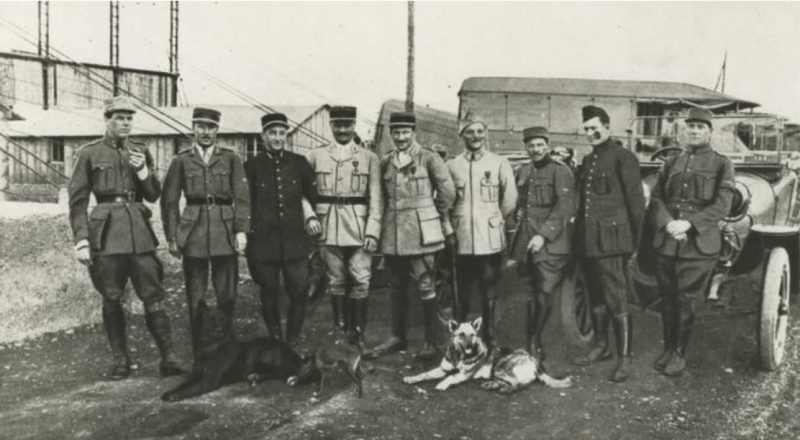Historian Marc McClure intends to make an American First World War aviator, Kiffin Yates Rockwell, as well known in the U.S. as he is in France.
His name was recognized at that time, something like a mixture of military hero meets an American astronaut, said McClure, who teaches at Morristown, Tennessee’s Walters State Community College.
He thinks because Americans eventually had a bad feeling about the First World War, like maybe we were conned into it, and why did we participate? Then World War II happened, and it sort of sucked all the oxygen from space.
McClure, as the invitee of the Western North Carolina Historical Association, will work to keep Rockwell’s existence alive in a Saturday presentation at the University of North Carolina titled, Kiffin Rockwell, Asheville’s Celebrated WWI Fighter Pilot. Augmenting the lecture, there’s a film about McClure produced using Rockwell’s period photos, voice actors, and letters home.
Rockwell, who destroyed the first enemy aircraft attributed to the famous Escadrille Lafayette, died a century ago, on Sept. 23, 1916, fighting a German bi-plane.
Born in Newport, Tennessee, he came into the world in 1892 the son of James Chester Rockwell, a Baptist minister who died not long after Kiffin was born and Loula Ayres.
Rockwell dropped out of college in 1911 and moved to San Francisco, where he operated an advertising business. He returned in January 1914 to the South, reunited with his brother, and then worked at a newspaper in Atlanta.
He wrote to the French consulate in New Orleans at the war’s start, asking about helping in the war.
The Rockwells were impatient men, though. When they didn’t hear back, they decided to board a ship for France. They enlisted in the French Foreign Legion the first day France accepted non-French citizens as soldiers on Aug. 21, 1914.
America didn’t enter the war until early April 1917. Americans could enlist in the French Foreign Legion without sacrificing their American nationality.
At 6 feet 4 inches in height, Rockwell made a big target, however. He was wounded in the thigh one day, and after hiding himself in a hole where detonating shells covered him in soil, he dragged himself back across the battleground.
Rockwell spent six weeks in treatment, but he was not able to continue as a foot soldier. Undeterred, he managed to wrangle an assignment to flight training school.
After, Rockwell took to the skies in April 1916 following seven months of training as a “pursuit pilot,” called fighter pilots now. He became a member of a new squadron of American aviators in what was initially termed the American Squadron (Escadrille Americaine), later exchanged to the Escadrille Lafayette, to honor the Marquis de Lafayette, who backed the American Revolution. The squadron had 38 American pilots.
In May 1916 he was the first member of the Escadrille Lafayette to bag an enemy plane.
He is recognized as having shot down officially four aircraft, but the number could be higher since at that time planes had to fall into friendly trenches, to confirm the action.
A historical sign honors Rockwell and his legacy on Merrimon Avenue, and in his memory, the Veterans of Foreign Wars posts in Newport, Tennessee, and in Asheville are named after him.
Strangely, he’s more recognized in France than he is in America, said Bill Lineberry, a member of the Western North Carolina Historical Association’s program committee, Citizen-Times reported.
Rockwell, according to his desire, is buried near where he died, in the Luxeuil-les-Bains cemetery.
Rockwell was posthumously awarded the Cross of the Legion of Honour, France’s highest honor. The French honor the Escadrille Lafayette during a memorial service each year.
